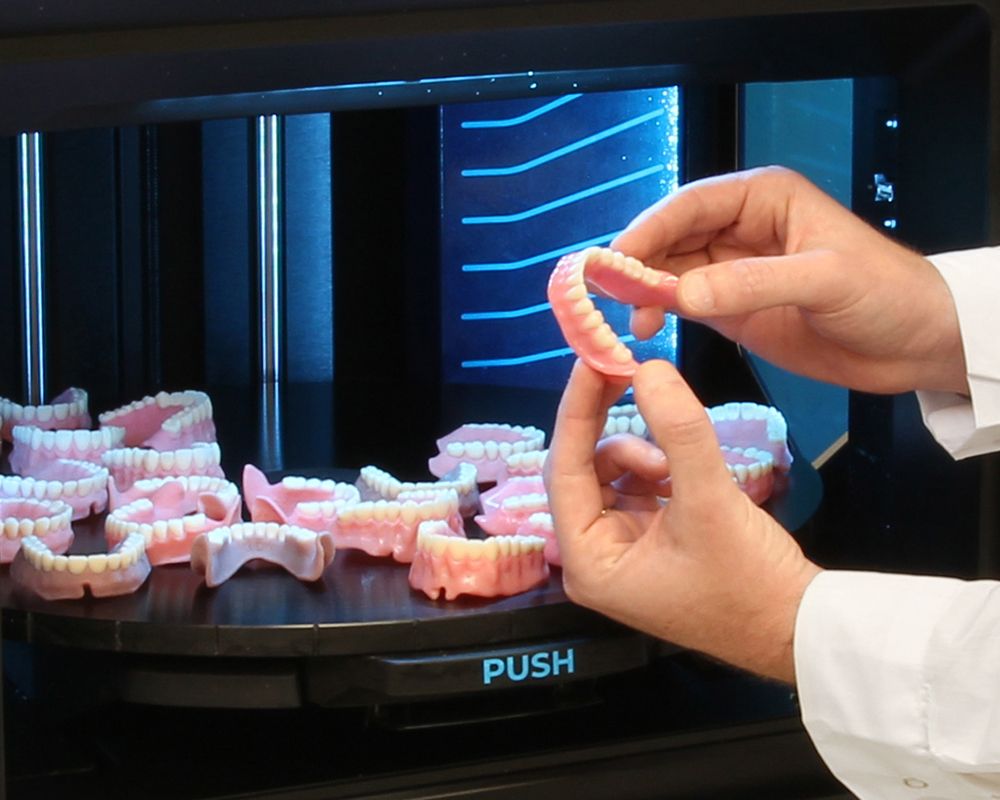Dental Goes Digital: Why Now Is the Time to Invest In Offering 3D Printed Dentures
With a newfound shift to 3D printing at scale, the author shares 6 reasons why now is a better time than ever for dental labs to make this investment.

3D printing for dental labs has made considerable progress since its first introduction more than 20 years ago. The first applications to be 3D printed were dental models and surgical guides which are still the bulk of 3D printed parts. However, the adoption of 3D printed dentures, and milled dentures, has remained low due to technological and economical limitations.
This need can now be filled through new additive manufacturing solutions. With this newfound shift to 3D printing at scale, there are 6 reasons why now is a better time than ever for dental labs to invest in 3D printing of dentures. This includes the increased productivity for skilled dental technicians, cost savings, a streamlined workflow, more accurate dentures, high esthetics, and better overall service provided to lab clients.
According to market research firm, iData, there were 4.2 million full dentures created in the U.S. in 2021–and more than 18 million worldwide. However, according to a recent survey by LMT (Lab Management Today), barely 5 percent of U.S. dentures were created digitally. These numbers may be low, but the tide is changing.
Larger populations requiring dental prosthetics and faster turnaround will drive strong demand, which can be filled more easily through new additive manufacturing solutions. With this newfound shift to 3D printing at scale, here is more detail on the 6 reasons why now is a better time than ever for dental labs to invest in 3D printing of dentures.
- 1. Increased productivity for skilled dental technicians: A recent survey by LMT found that 34 percent of lab owners surveyed mentioned finding qualified employees one of the top challenges for 2023. In the US, many dental technology programs which trained certified dental technicians closed in the last 2 decades. According to Zippia, the average age of a dental technician is 43, and almost 60 percent of dental technicians are over 40 years old. This is completely different from the age distribution of other highly skilled professions such as dentists, teachers and engineers where most professionals are below 40. Use of digital technology requires less handling, making lab technicians more efficient, allowing dental labs to increase lab production with the same workforce.
- 2. Cost savings: Labor cost of a digital denture is much lower than the labor cost of a traditional denture. The material cost of a full 3D printed denture is typically $20-40 per denture, while in traditional dentures only the set of carded teeth can cost more than $40.
- 3. Streamlined process: The digital denture production process is repeatable and consistent. In 3D printing, a difficult case and a simple case will take the same time to print. Production is consistent across the day and is not affected by outside factors. And, production can be done during down office hours without oversight or handling.
- 4. Improved accuracy: Because digital processes are repeatable studies showed that digital dentures tend to be more accurate than traditional ones. In addition, in many cases printed dentures can achieve higher accuracy on the intaglio surface than milling because of the geometrical limitations of milling, especially seen in the ridge of the denture. New monolithic denture printing solutions achieve high accuracy on both the intaglio and the occlusal surface because no accuracy is lost in the manual attachment of teeth.
- 5. High esthetics: In the past 3D printed dentures were inferior to traditional ones on esthetics. This is improving. Color selection is expanding, shades are more accurate. Soon labs will be able to add capillaries to the denture base by dipping the base in a container with material that has fibers. The penetration of jetting technology into digital dentures with companies that generate color on the file using base colors is another advancement in esthetics. By having different color and translucency in every voxel such printers can reach esthetics similar to mid-range and premium carded teeth as well as characterized bases.
- 6. Better service to the lab clients: Today, dentists and labs can store the records of the patient digitally and if a patient misplaced his denture the lab can create an exact replica in less than 24 hours. This opens many possibilities for patients, dentists, and labs to provide replacement services and product warranties which were impossible to implement in the past. And, the turnaround time is much faster than with traditional dentures.
Smart Factory Setup for Dental Labs
Another benefit on top of the 6 reasons alreadyaddressed comes from new software platforms that allow labs to scale production efficiently through management tools of several 3D printing technologies. Fleet management, performance analysis and remote tools are all available features that contribute to a smoother workflow. In some cases, application quality and printer capacity can be improved over time using software upgrades that tweak the implementation of new and existing resins on the printer—essentially creating a new concept of hardware enabled by software.
Investing in 3D printing today will allow the labs that invested in the technology to automate their production, and in the future, ease volume and scale up.
Looking forward, investing in 3D printing for dentures can create significant efficiencies and improved offerings for dental labs. It is a more cost-effective alternative to traditional dentures, which have historically taken significantly longer to manufacture and required more alterations than those that are digitally produced. Ultimately, taking this approach ensures that dental labs can produce dentures faster and more accurately than ever before, staying at the top of their profession. That is certainly something to smile about.